8 min to read
The Role of Programmatic Media in B2B Demand Generation
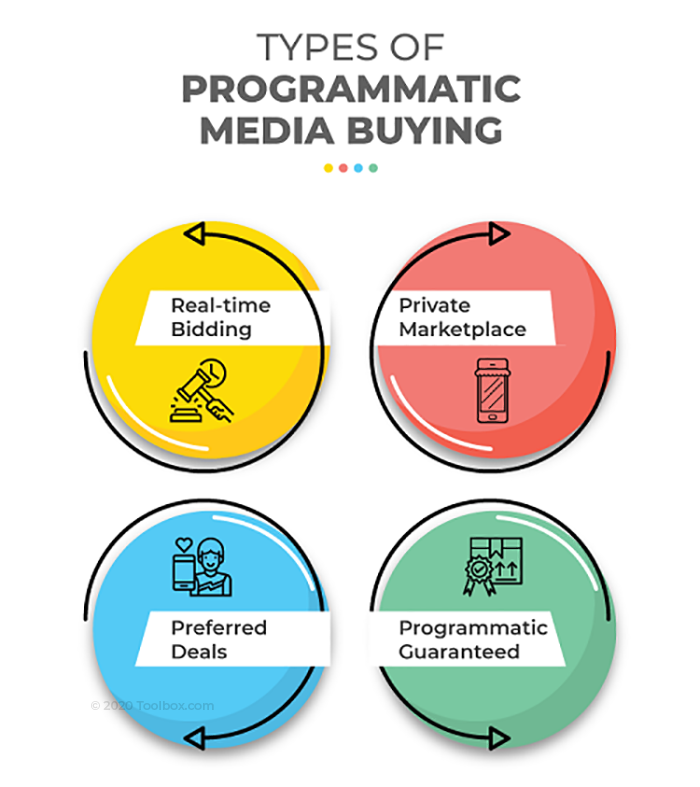
programmatic media
Programmatic media buying is a method of digital advertising that uses automated technology for the buying and selling of media inventory. This process occurs in real-time and involves the use of algorithms and data insights to target specific audiences and demographics.
You could work with us, the leading digital marketing agency in Lisbon, Portugal.
Demand-Side Platforms (DSPs)
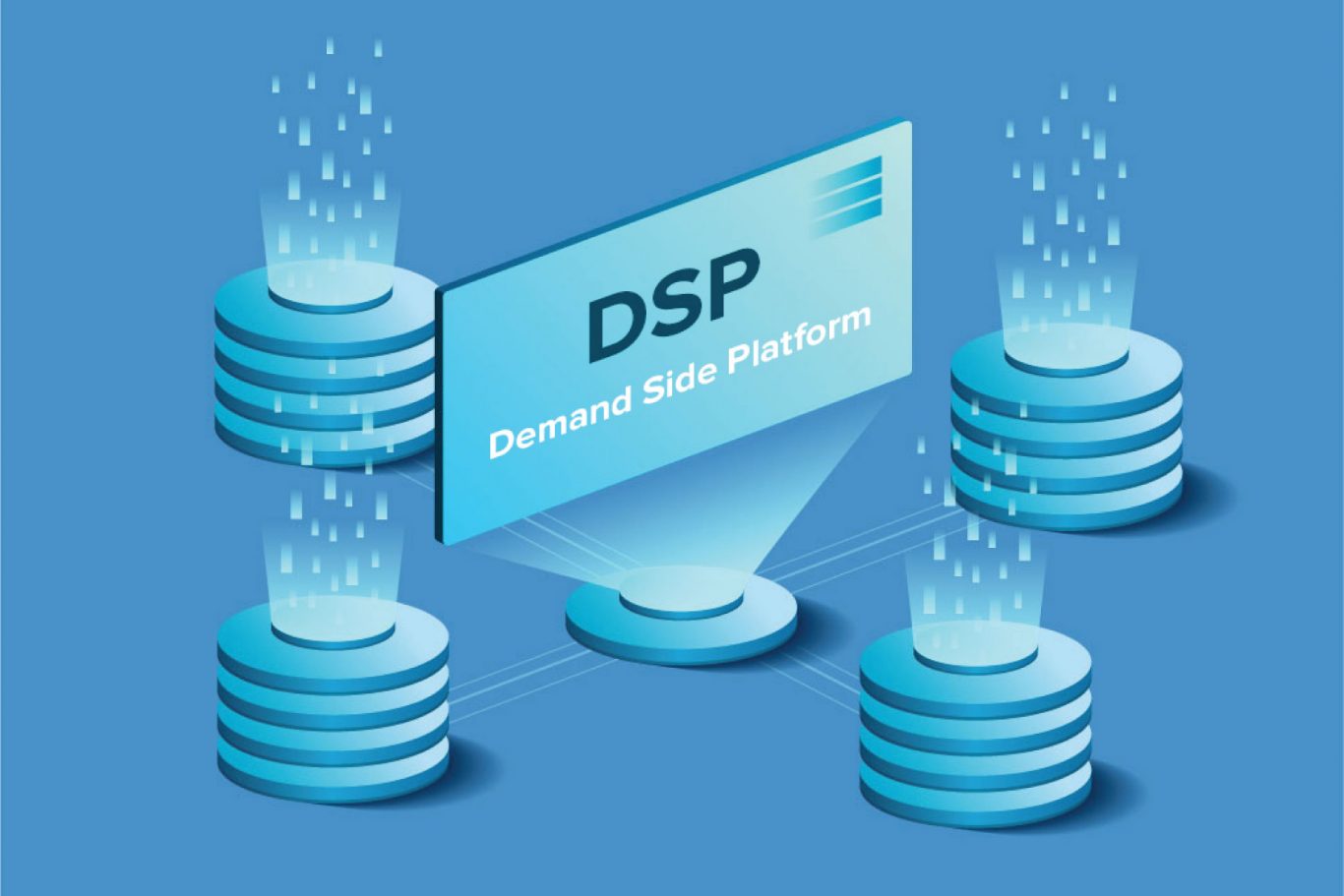
Demand-Side Platforms are software platforms used by advertisers and agencies to automate the purchasing of digital advertising. DSPs allow users to manage multiple ad exchanges and data exchange accounts through one interface. The primary function of a DSP is to facilitate the buying of display, video, mobile, and search ads using a real-time bidding (RTB) system within the programmatic advertising ecosystem.
How do we utilise DSPs?
DSPs provide us with a centralised platform to purchase digital ad inventory from a variety of sources, including ad exchanges, ad networks, and directly from publishers. This centralization significantly simplifies the media buying process, making it more efficient and less time-consuming than traditional methods.
Through DSPs, we can leverage extensive datasets to target ads more precisely. This includes demographic data, behavioural insights, and contextual information which ensure that the ads are shown to the right audience at the right time and in the right context. For instance, if we are targeting IT professionals for a B2B software product, the DSP allows us to refine our audience based on factors like job title, industry, online behaviour, and even specific times of day.
Real-Time Bidding (RTB): DSPs use RTB technology to automate the buying of ad inventory in real-time. This means that each ad impression is auctioned off in milliseconds as a web page is loading. The efficiency of RTB not only helps in optimising the ad spend but also ensures that our clients' ads are more likely to be viewed by users who are most likely to convert.
Performance Optimization: DSPs provide tools and analytics that allow us to monitor and measure the performance of campaigns in real-time. We can quickly adjust our strategies based on what the data tells us about how different ads and targeting strategies are performing. This might involve shifting budgets to better-performing campaigns or tweaking ad creatives and targeting parameters to enhance performance.
Using a DSP enables us to scale our advertising efforts more effectively. As the DSP automates much of the ad buying process, we can manage larger campaigns more efficiently, or increase the number of campaigns we run without significantly adding to our workload.
Supply-Side Platforms (SSPs)
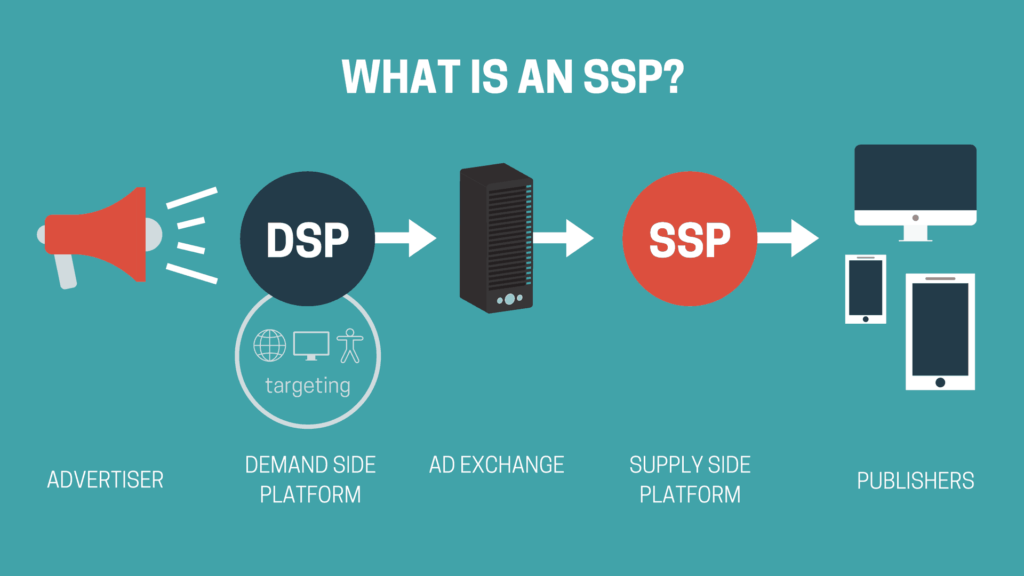
Supply-Side Platforms (SSPs) are crucial components in the programmatic advertising ecosystem, particularly from the perspective of publishers. At CodeDesign, while our primary focus is generally on the demand side, understanding and sometimes managing the supply-side dynamics can be essential, especially when aligning digital strategies that benefit from increased knowledge of advertising technology landscapes.
What is a Supply-Side Platform (SSP)?
An SSP is a technology platform used by publishers to manage, sell, and optimise available inventory (ad space) on their websites and digital platforms. It automates the selling of advertising space to ensure that publishers maximise the revenues from their ad inventory. SSPs connect publishers to a vast network of potential buyers (advertisers) through ad exchanges and demand-side platforms (DSPs).
How do we achieve hyper specific targeting?
Using programmatic platforms, we can target ads specifically to individuals within certain industries by using data that categorises users based on their browsing habits, content consumption, and even their engagement with industry-specific sites and platforms. For instance, if we're working with a client offering software solutions for the healthcare sector, we use programmatic tools to identify and target users who frequently visit healthcare professional sites, use healthcare management tools, or participate in healthcare forums.
One of the most powerful aspects of programmatic advertising is its ability to target specific job roles within companies. We use programmatic data which includes job titles gathered from various sources like LinkedIn, job boards, and professional forums. This enables us to direct our client's advertising spend towards individuals who have the authority to make purchasing decisions, such as C-level executives, directors, or managers in relevant departments. For instance, targeting CFOs and financial managers for a new corporate financial planning tool.
Efficiency in ad spend
Before launching a programmatic campaign, we establish clear objectives that are measurable. These could range from increasing brand awareness to driving specific lead conversions. Having a concrete goal allows us to measure the campaign’s success more accurately and directly tie it to business outcomes.
Through real-time bidding (RTB), programmatic advertising enables us to purchase ad space at the optimal price. We continuously monitor bidding strategies and make adjustments based on performance data. This dynamic approach to spending allows us to maximize our ad budget, ensuring we are not overpaying for ad space and are efficiently reallocating budgets towards high-performing segments.
Programmatic platforms allow us to deploy highly targeted ads based on user data such as demographics, behaviour, and browsing history. This precision targeting ensures that the budget is spent on reaching only the most potential customers, which directly contributes to a higher ROI.
Strategies to use programmatic advertising in DemandGen:
Synchronise programmatic campaigns with sales funnels and lead qualification processes
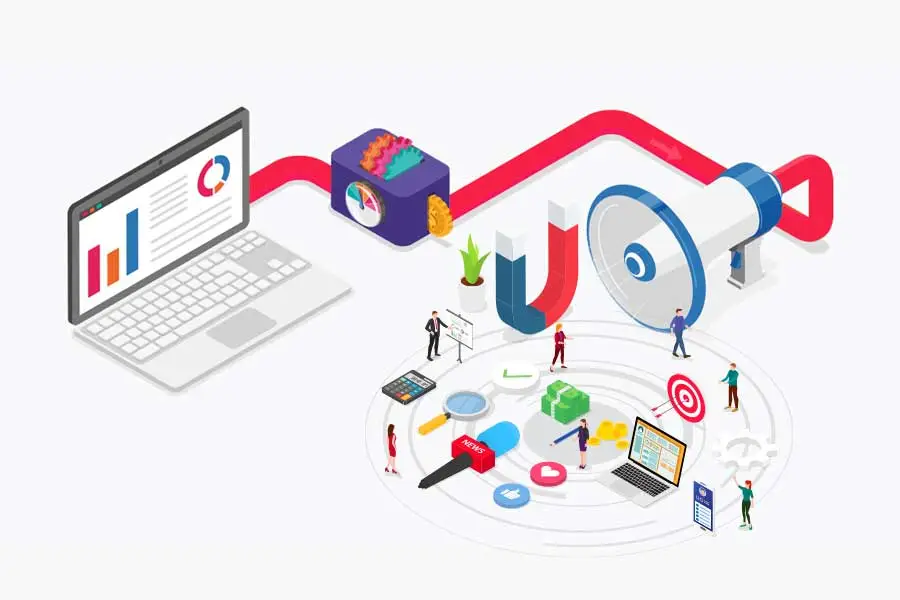
Synchronising programmatic campaigns with sales funnels and lead qualification processes is a sophisticated strategy that can dramatically improve the efficiency and effectiveness of B2B digital marketing efforts. Our programmatic media experts at CodeDesign employ several techniques to ensure that our programmatic advertising efforts are closely aligned with our clients' sales funnels and lead qualification criteria. Here's how we approach this:
Understanding and Mapping the Sales Funnel
First, we thoroughly understand and map out the client’s sales funnel. This involves identifying each stage of the customer journey, from awareness and consideration to decision and loyalty. By doing so, we can tailor our programmatic campaigns to target the right audience with the right message at the right time.
Awareness Stage: We use broad targeting to reach potential leads who may not yet be aware of the client's products or services. The content here is educational and designed to attract engagement.
Consideration Stage: For audiences that have shown interest, we refine our targeting to focus on more detailed product benefits, testimonials, and case studies that support the value proposition.
Decision Stage: At this point, our ads become more conversion-focused, with strong calls to action and offers like free trials, demos, or consultations.
Data Integration and Audience Segmentation
Integrating CRM data with our programmatic platforms is crucial. This allows us to create detailed audience segments based on actual customer behaviours and previous interactions with the brand. We use this data to craft personalised ad messages that resonate with each segment, increasing the likelihood of moving leads through the sales funnel effectively.
Dynamic Creative Optimization (DCO)
DCO plays a key role in delivering personalised ads based on the data received in real-time. By using DCO, we can automatically adjust the creative elements of our ads (such as images, messaging, and offers) to match the preferences and behaviours of the audience segment viewing the ad.
This ensures that the ad content is highly relevant to each stage of the funnel, which can increase engagement rates and drive conversions.
Lead Scoring and Qualification Integration
We integrate lead scoring and qualification processes into our programmatic strategies by setting up specific conversion actions that align with different scores.
For example, downloading a white paper might score lower than signing up for a demo. We adjust our bidding strategies to focus more on higher-scoring actions, which indicate a higher level of buyer intent.
Feedback Loop for Continuous Improvement
A robust feedback mechanism is essential to continuously refine and optimise the campaign. We analyse the performance data to understand which aspects of the campaign are working well and which are not.
This data is fed back into the campaign strategy to make real-time adjustments in targeting, bidding, and creative execution.
Cross-Channel Coordination
Finally, we ensure that our programmatic campaigns are not operating in isolation but are coordinated with other digital marketing activities like email marketing, social media, and SEO.
This holistic approach ensures consistent messaging across all channels and touchpoints, which is crucial for moving leads smoothly through the sales funnel. By employing these techniques, CodeDesign ensures that programmatic campaigns are not only targeted and personalised but also perfectly aligned with the sales and marketing goals of our clients.
How programmatic supports ABM by reaching specific accounts with personalised messaging at scale?
Programmatic platforms allow us to target ads based on a variety of data points including company size, industry, specific businesses, and even job roles within those businesses. This is achieved by integrating third-party data from platforms like LinkedIn or specialised B2B data providers, which can offer insights into individual behaviours and preferences as well as company-wide technologies used and business needs.
Once we have identified the key accounts, programmatic advertising enables us to deliver personalised messages tailored to the specific needs and characteristics of each account. For instance, if we're targeting a software company, we might focus on showcasing our expertise in boosting software sales through digital marketing, while for a manufacturing firm, the emphasis might be on enhancing supply chain visibility through effective digital strategies.
We use DMPs to consolidate and manage data about our target accounts. DMPs collect detailed data across multiple touchpoints and consolidate this information into a unified customer profile. This allows us to create highly targeted campaigns that address the specific challenges and pain points of each account, enhancing the relevance and effectiveness of our messaging.
Dynamic Creative Optimization: Programmatic technology supports Dynamic Creative Optimization, which automatically adjusts the content of an ad in real-time to match the interests and previous behaviours of the viewer. For ABM, this means that when a decision-maker from a targeted account visits a website, the ad they see can dynamically tailor its imagery, messaging, and CTA to resonate with their specific business needs and personal preferences.
How do you integrate programmatic campaigns across multiple digital platforms?
This approach of integration enhances touchpoints with prospects by ensuring consistent messaging and optimised interactions wherever the potential customers are active.
We start by understanding the client's overall marketing objectives, target audience, and key performance indicators (KPIs). This foundational knowledge allows us to design a unified strategy that aligns programmatic buying across all platforms, ensuring consistent messaging and branding.
We segment the audience based on their behaviours, preferences, and the stage they are at in the buying cycle. This segmentation helps tailor the content and ads specifically to meet the audience’s needs across different platforms.
Utilising a Centralised Data Management Platform (DMP)
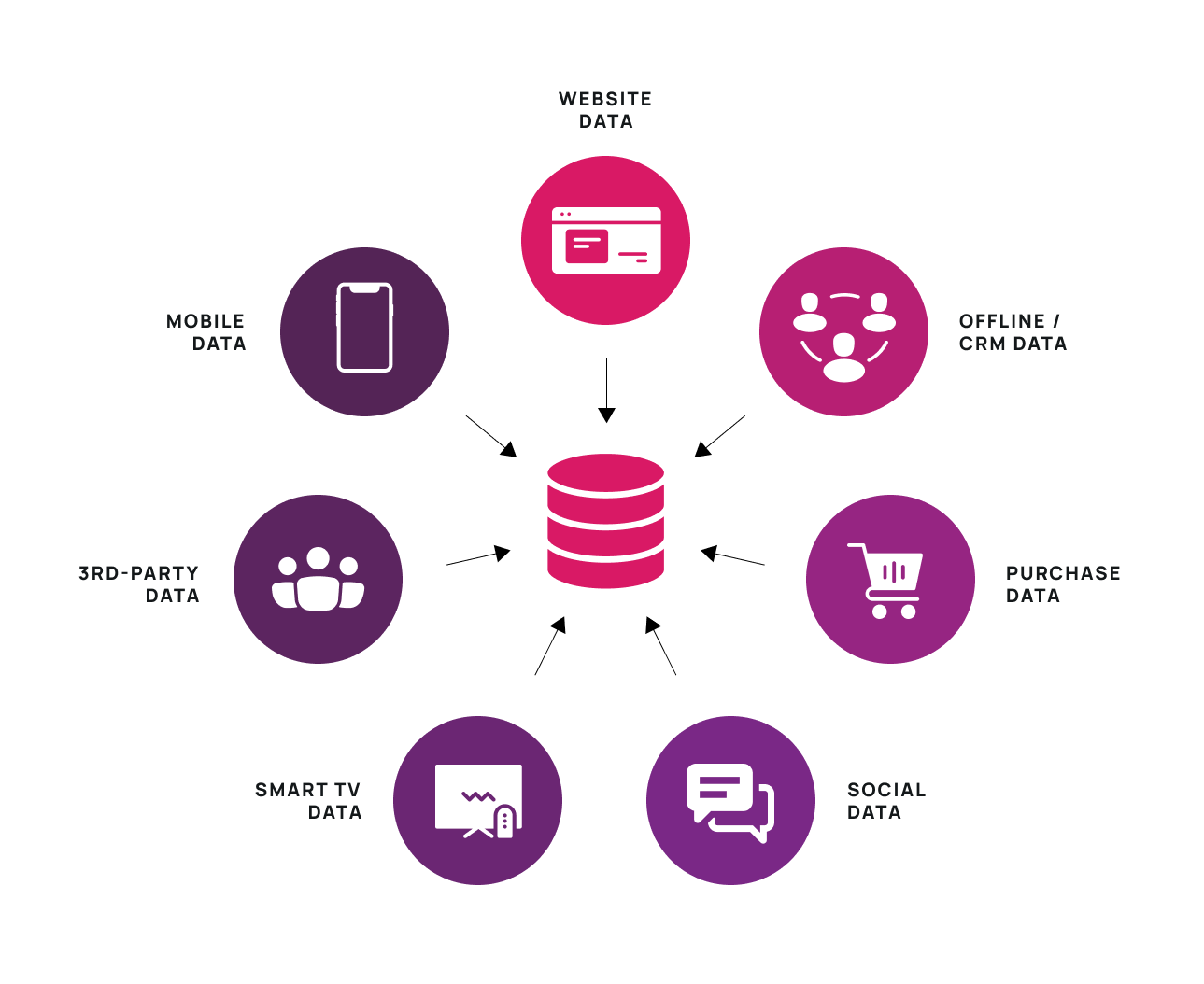
Data Integration: We leverage DMPs to integrate data from various sources, including social media interactions, email responses, and mobile app usage. This integration provides a comprehensive view of the customer journey.
Audience Insights: By analysing the consolidated data, we gain insights into the preferences and behaviours of the audience, which inform the targeting and personalization strategies for each platform.
Coordinated Execution across Platforms
Social Media: For platforms like Facebook, Instagram, and LinkedIn, we use programmatic tools to automate ad placements that are optimised for each platform's unique format and audience behaviour. These ads are targeted based on user interactions within each social network.
Email: We integrate programmatic advertising with email marketing by utilising automated systems to trigger personalised emails based on user actions or milestones reached during their interaction with programmatic ads on other platforms.
Mobile: Programmatic ads on mobile are targeted based on the user’s app usage patterns, location data, and engagement with previous ads. Mobile campaigns are optimised for both display and in-app advertising, ensuring a seamless experience for users on their devices.
We ensure that the user has a seamless experience across devices. This involves using technology that can track user behaviour across devices and adjust the messaging accordingly. We use advanced attribution models to understand the impact of each touchpoint on the user’s decision-making process. This helps in allocating budget effectively and optimising the campaign performance across platforms.

About Bruno GavinoBruno Gavino is the CEO and partner of Codedesign, a digital marketing agency with a strong international presence. Based in Lisbon, Portugal, with offices in Boston, Singapore, and Manchester (UK) Codedesign has been recognized as one of the top interactive agencies and eCommerce agencies. Awarded Top B2B Company in Europe and Top B2C company in retail, Codedesign aims to foster personal relationships with clients and create a positive work environment for its team. He emphasizes the need for digital agencies to focus on data optimization and performance to meet the increasingly results-driven demands of clients. His experience in digital marketing, combined with a unique background that includes engineering and data, contributes to his effective and multifaceted leadership style. |

About CodedesignCodedesign is a digital marketing agency with a strong multicultural and international presence, offering expert services in digital marketing. Our digital agency in Lisbon, Boston, and Manchester enables us to provide market-ready strategies that suit a wide range of clients across the globe (both B2B and B2C). We specialize in creating impactful online experiences, focusing on making your digital presence strong and efficient. Our approach is straightforward and effective, ensuring that every client receives a personalized service that truly meets their needs. Our digital agency is committed to using the latest data and technology to help your business stand out. Whether you're looking to increase your online visibility, connect better with your audience, get more leads, or grow your online sales. For more information, read our Digital Strategy Blog or to start your journey with us, please feel free to contact us. |
CodeDesign is leading:
- Digital Agency
- Digital Marketing Agency
- Digital Ecommerce Agency
- Amazon Marketing Agency



Add comment ×